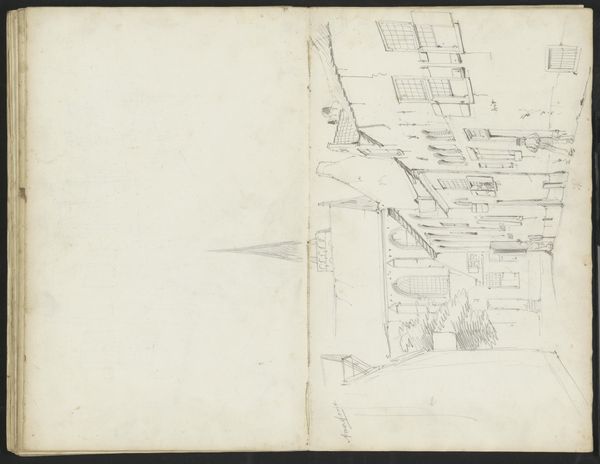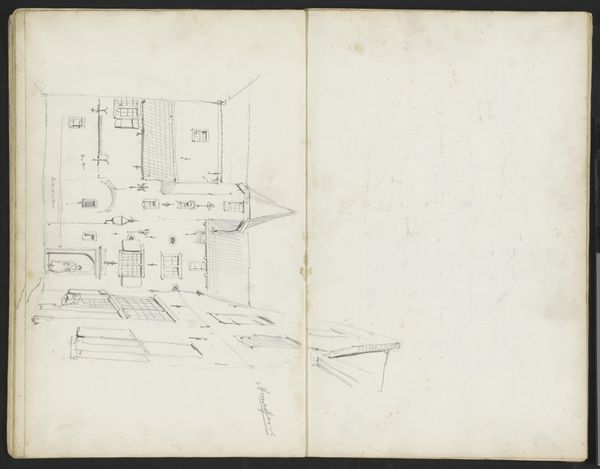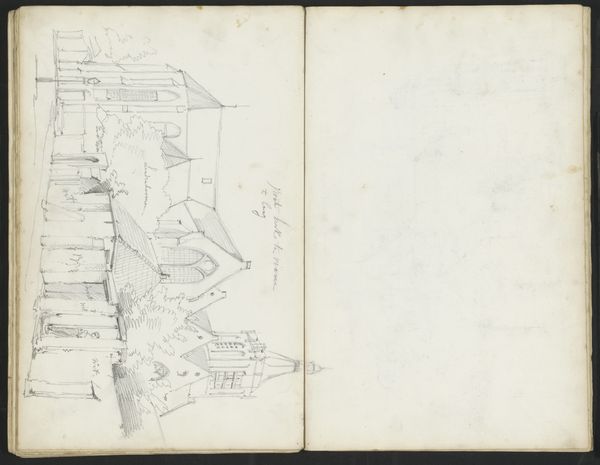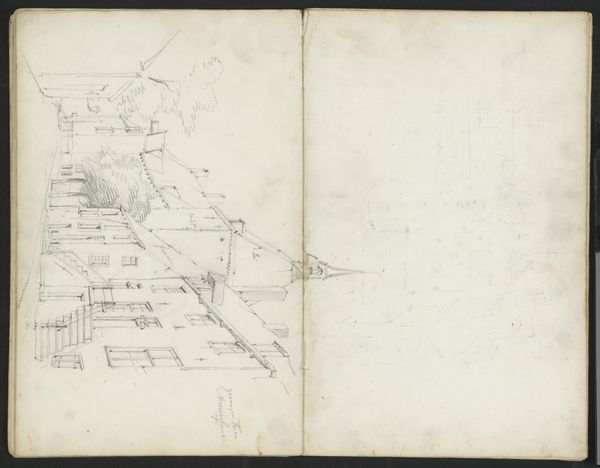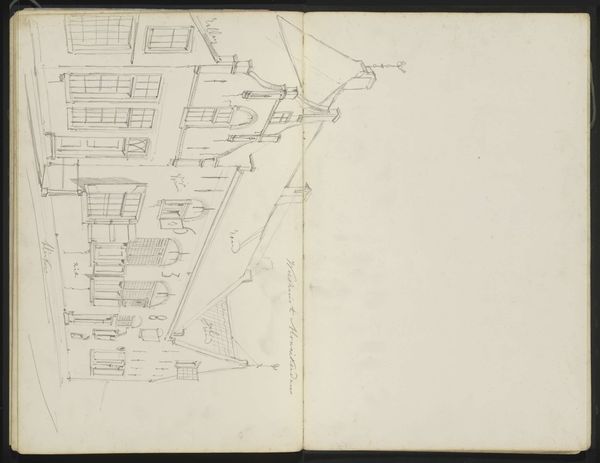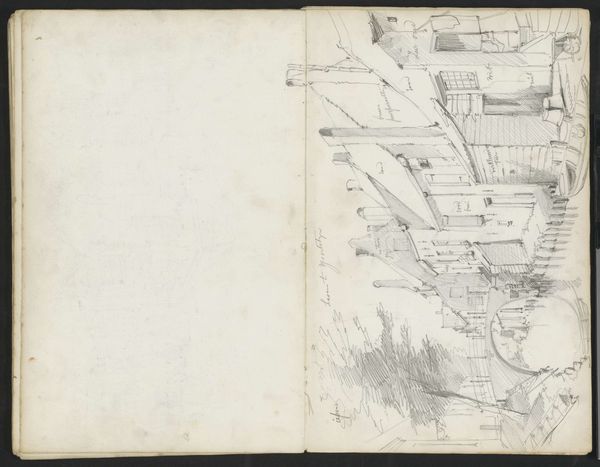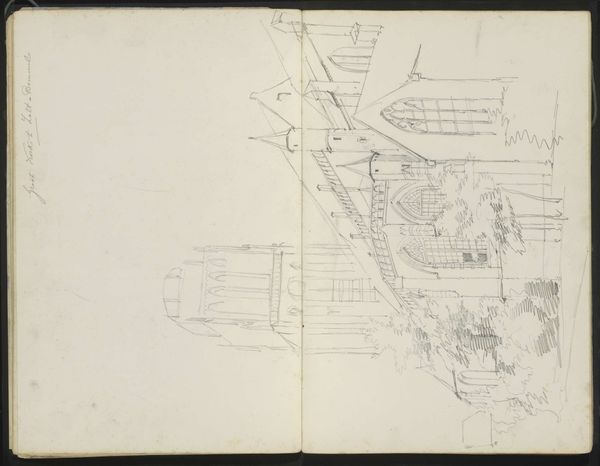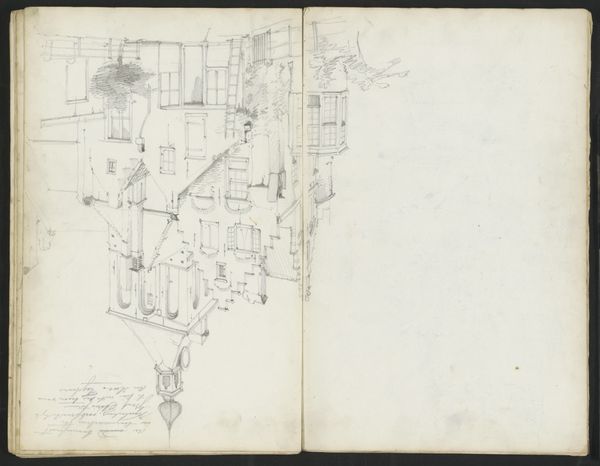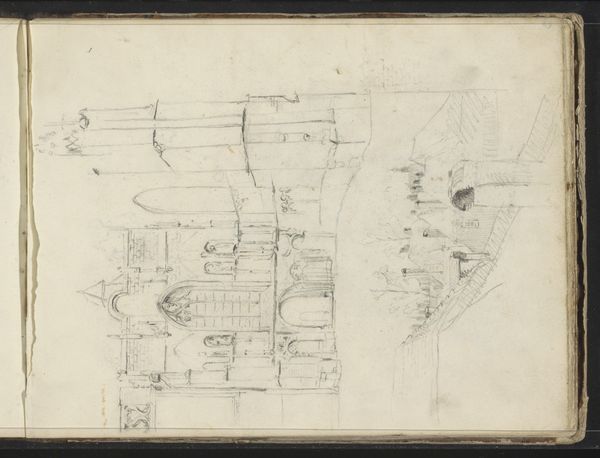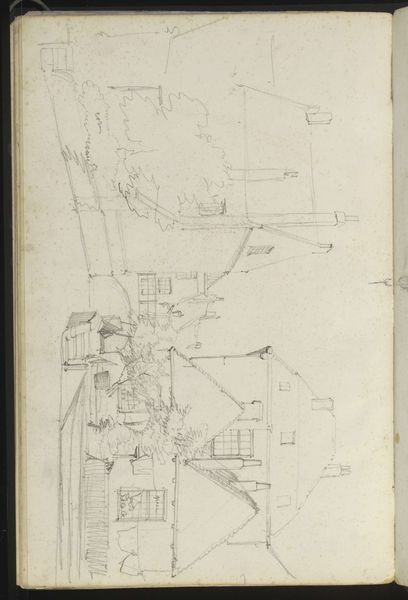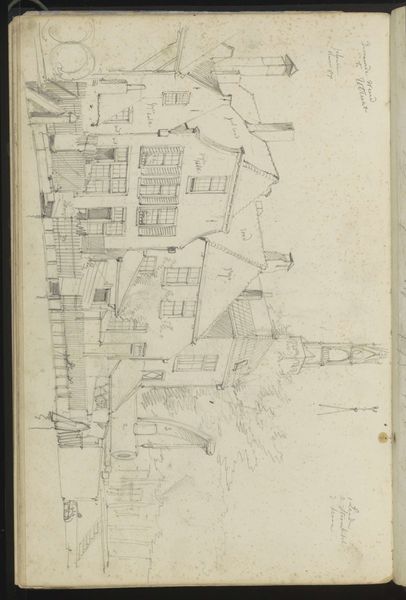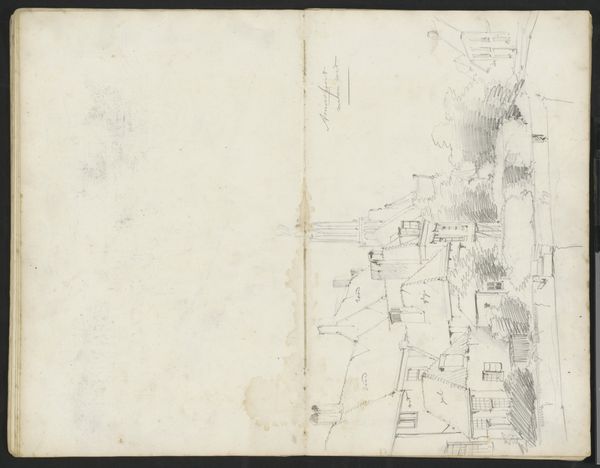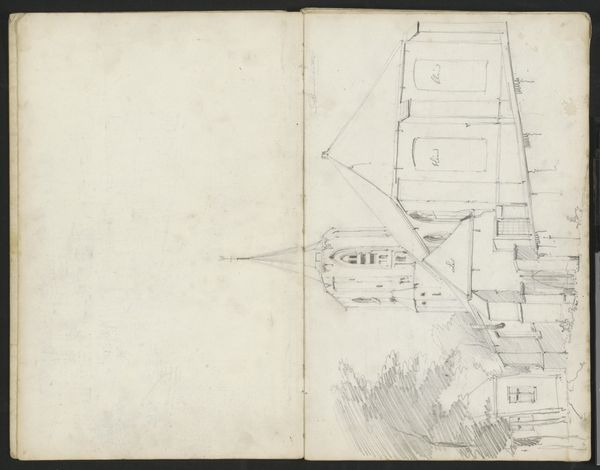
drawing, ink, pen
#
drawing
#
ink
#
pen
#
cityscape
#
street
Copyright: Rijks Museum: Open Domain
Editor: We’re looking at Willem Koekkoek’s "Muurhuizen en Scherbierstraat te Amersfoort," a pen and ink drawing from somewhere between 1849 and 1895. It's striking how spare and fragmented it feels, almost unfinished. What do you make of its composition? Curator: Precisely that sense of fragmentation is key. Note how the composition rejects traditional perspective. Koekkoek isn’t trying to offer a mimetic representation of Amersfoort. Rather, the lines create a network, almost a diagram, of spatial relationships. Editor: A diagram? That's interesting. Curator: Yes. Consider the use of line: thin, precise, yet ultimately suggestive rather than definitive. Observe the subtle gradations of tone achieved solely through the density and layering of these lines. Ask yourself, does this focus on line, tone, and spatial construction reveal more than a photorealistic image could? Editor: I hadn’t thought of it that way, but I see what you mean. It’s less about a literal street and more about the interplay of form. But what about the empty page on the left? Curator: The juxtaposition is vital. The blank space becomes active, emphasizing the incomplete, provisional nature of the drawn space. The blankness makes you consider the nature of drawing itself as an act of construction, of world-building through pure form. Editor: So, the drawing isn’t really *about* Amersfoort at all. It’s about the language of drawing, using architectural elements as vocabulary. That's a pretty mind-blowing take. Curator: Indeed. Hopefully it opens your eyes to how we can use careful study of line and form to access unexpected layers of meaning.
Comments
No comments
Be the first to comment and join the conversation on the ultimate creative platform.
